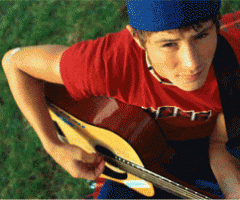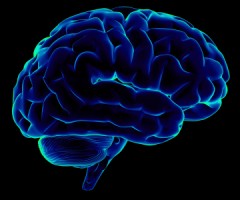Lying involves a speaker making a false statement with the intention to deceive the recipient (Bok, 1978; Chrisholm & Feehan, 1977; Coleman & Kay, 1981; Lee, 2000). Lies differ in type, incidence, magnitude and consequence. There are various gradations of severity, from harmless exaggeration and embellishment, to intentional and habitual deceit. In a study at the University of Arizona in 2000 Wendy Gamble identified four basic types of lies:
- Prosocial: lying to protect someone, told for the sake of preserving social relations,
- Antisocial: lying to hurt someone else intentionally, told for personal advantage or to avoid punishment,
- Self-enhancement: lying to save face, to avoid embarrassment, disapproval or punishment,
- Selfish: lying to protect the self at the expense of another, and/or to conceal a misdeed.
Most parents hear their child lie and assume he/she is too young to understand what lies are or that lying’s wrong. Victoria Talwar, Ph.D., an assistant professor at Montreal’s McGill University and a leading expert on children’s lying behavior has found the opposite to be true—kids who grasp early the nuances between lies and truth use this found the opposite to be true—kids who grasp early the nuances between lies and truth use this knowledge to their advantage, making them more prone to lie when given the chance. LaFreniere (1988) reported descriptions of deceitful behavior in children as early as 19 months. LaFreniere interpreted deceit at this age as a way of gaining attention, provoking laughter, or being humorous. Babies will fake a cry, pause, wait to see who is coming and then go back to crying in order to gain attention from a specific person. Another incorrect assumption parents make is that their child will stop lying when he/she gets older. Many professionals will advise parents to just let lies go as the child will eventually grow out of it. The truth, according to Dr. Talwar, is that children “grow into it.” Observational studies have shown a 4-year-old will lie once every two hours, while a 6-year-old will lie about once every hour and a half. Pamela Meyer a leading expert in deception detection, and author of the book Liespotting: Proven Techniques to Detect Deception states that a one year old learn concealment, two year olds bluff, five years olds lie out right (manipulating) by flattery, nine year olds are masters of the cover up and by the time a person is in college they will lie to their mother in 1 out of every 5 interactions.
Nancy Darling, Ph.D. while at Penn State University, observed that 98 percent of the teens reported lying to their parents. When questioned about 36 topics teens lied to their parents on 12 of those topics. They lied about how they spent their allowance, whether they’d started dating, what clothes they wore while in the company of their friends, what movie they saw and with whom they went, alcohol and drug use, whether they were spending time with friends their parents disliked, how they spent their afternoons while their parents were at work, whether chaperones were in attendance at a party and whether they rode in cars driven by drunken teens. Dr. Darling also noted that being an honors student or an overscheduled child did not significantly affect the outcome.
Lying can be a warning sign that there is something wrong in a child’s life. It can be a symptom that something is not right for a child. Violent Oaklander, Ph.D. explains that children may lie because they fear taking a stand for themselves and are afraid to face reality. Children are immersed in self-doubt, poor self worth, guilt, and or shame leaving them unable to cope with the world around them. Dr. Oaklander goes on to explain that often times children are forced to lie by their parents because parents can be to inconsistent, harsh, or may have impossible expectations to difficult for the child to meet. Another important and often over looked reason children lie is they are just copying their parent’s behavior.
Psychologists have found traits within children that lie. Examples of these traits include:
- Emotional well-being. Children who chronically lie tend to have poor self worth and the lie is usually motivated out of fear or poor self-esteem. This child lies in order to make himself/herself appear more important, smart, brave or otherwise impressive.
- Cognitive ability. Dr. Talwar explains that lying is the more advanced skill than telling the truth. A child who is going to lie must recognize the truth, intellectually conceive of an alternate reality, and be able to convincingly sell that new reality to someone else.
- Social skills. Lying also demand social abilities that honesty simply doesn’t require. Robert S. Feldman found that convincing lying is actually associated with good social skills. It takes social skills to be able to control your words as well as what you say non-verbally.
Being a “lie detector” is not a skill that is easily developed. It takes quite a bit of training. Experts study facial expressions, micro expressions, eye movements, body movements, verbal expressions, and more to be able to accurately identify when a lie is being told. However, experts offer a few tips that may be helpful in identifying when a lie is being told.
First, It is important to know the child’s typical verbal and non-verbal behaviors. First establish a baseline. A baseline is how someone behaves when he/she is not lying and gives you a mode of comparison. If you do not know the child very well, initiate a conversation about things they child likes to do (sports, hobbies, etc.) and pay close attention to both verbal and non-verbal expressions. This also aids in building rapport. Establishing a good baseline takes approximately 3-5 minutes.
Next ask the child to tell the story of what happened. Listen carefully to what the child is saying. When you ask a “yes” or “no” question, the word “yes” or “no” should be in the answer versus long explanations of what occurred. Is the child overemphasizing their innocence? For example “I swear I didn’t do it”, or “just ask anyone.”
Listen to how the child tells you the story. People who are lying tell stories in strict chronological order. This is done to keep stories and details straight. How a person remembers a story is actually based on the experiences and emotional components of what occurred. The meaningful parts are usually shared first.
If something does not make sense ask follow-up questions. Also ask detailed questions – For example – what another person might have been wearing. Re-ask the same question later to see if the answer changes or not.
Use silence. Silence offers no feedback on whether you believe the child or not and someone who is lying will usually work keep talking to fill in the silence.
Pay attention to whether the child is looking at you when talking. When asked a difficult question, truthful people will often look away because the question requires concentration, while dishonest people will look away only briefly, if at all. Someone who is lying will tend to maintain eye contact as a way of checking to see if the lie is being believed. Finally ask if the child telling the truth.
Remember these are only tips and in no way make you a trained “Lie Detector”






